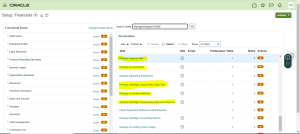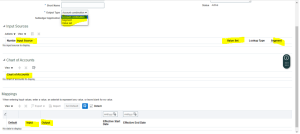Optimal utilization of Custom SLA can eliminate delays in Month-end closings
Introduction/ Issue: Effective utilization of Sub ledger Accounting can help eliminate delays in month-end close processes. Sub ledger Accounting (SLA) allows users to define custom accounting rules based on specific requirements and generate journal entries for sub ledger transactions. These entries are subsequently posted to the general ledger with an audit trail. SLA rules are user-defined and stored centrally for all sub ledger applications.
This discussion will focus on Mapping Sets, Account Rules, and how these components are associated with Journal Line Rule Sets to achieve our objectives.
Error Message: You must either modify the account rule to balance the journal by balancing segments or enable intercompany balancing for ledger XX XXX XXX XX GAAP.
Why we need to do / Cause of the issue:
During month-end close, various scenarios such as incorrect adjustments or misapplied receipts can arise, potentially becoming blockers for timely closure. It is crucial for businesses to close periods on time. In such cases, leveraging our expertise to create custom rules can prevent delays and ensure timely book closure.
When we run sub ledger period close exceptions report it would be showing the exceptions as below and we won’t be able to close the books until we clear the exceptions

How do we solve: to correct the issue, we need to write the SLA rules and derive the right accounting combinations.

Manage Mapping Set: Managing Mapping Sets in Oracle Cloud Receivables involves defining and setting up mappings between different data elements like customer details, transaction specifics, and accounting codes. These mappings ensure the accurate integration and processing of data from diverse sources or systems within Oracle Cloud Receivables. Effective management of Mapping Sets enables organizations to streamline data entry, enhance accuracy in financial transactions, and improve reporting capabilities. This, in turn, facilitates better decision-making and operational efficiency in managing receivables.
Hence, in our example we will be using the Mapping set to derive the segment value
To do the same, we will be using Input source as Adjustment Activity account since we are correcting adjustments, also we need to select the right chart of accounts to derive the segment value
Note: Input source and output source will be changing based on the requirement and the expectation

Once the Mapping set is created we need to define the Account Rules
Manage Account Rule: In Oracle Cloud Receivables, managing Account Rules involves setting guidelines for generating and processing accounting entries related to receivable transactions. These rules are crucial for maintaining consistent and precise financial reporting, as they dictate how revenues, expenses, and other financial items are identified and categorized. Effective management of Account Rules allows organizations to optimize their accounting workflows.
Here in this case, we can assign only an Account Rule to the Journal Entry Rule set and not a mapping set hence we will be defining the account Rule and we will assign a mapping set to the Account Rule

Name: As a part of name we need give the meaningful name to understand on why are we creating this to avoid confusions in future.
Chart of Accounts: we need to select the COA instance name which is associated with this current BU/Ledger
Rule Type: we need to select segment or value set based on the issue
Value Type: we will be using the Mapping Set
Condition: we will be writing the condition, specific to ledger Name and the transaction we are yet to account and to avoid other transactions from this rule.
“Ledger Name”(AR,S,S) = XX XX XX US GAAP ‘And’ ( “Transaction Number”(AR,S,S) = 18164)
Save
Manage Journal Entry Rule set Assignments:
These assignments ensure that transactions recorded in sub ledgers or other modules within Oracle Cloud Fusion are accurately captured and classified in the general ledger. By managing Journal Entry Rule set Assignments effectively.
Here in this example we will assigning the company segment with the Account rule as we created above to derive the balancing segment value.

Conclusion:
By defining the necessary Mapping Set, Account rule and assigning it to the journal entry rule set, we successfully derived the correct segment entity value, thereby avoiding intercompany rule issues and ensuring timely book closure.
— Nagaraju Mutakaratapu
